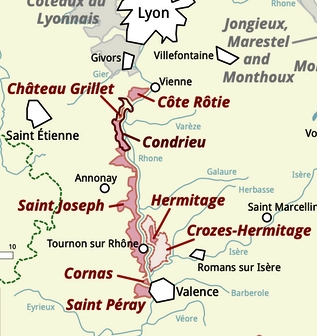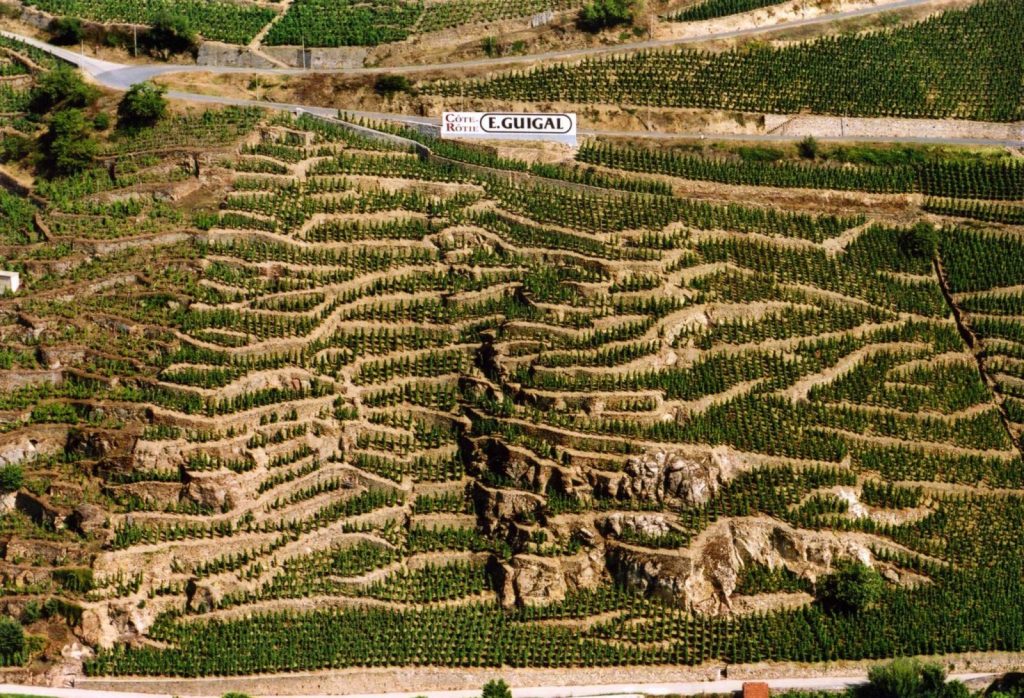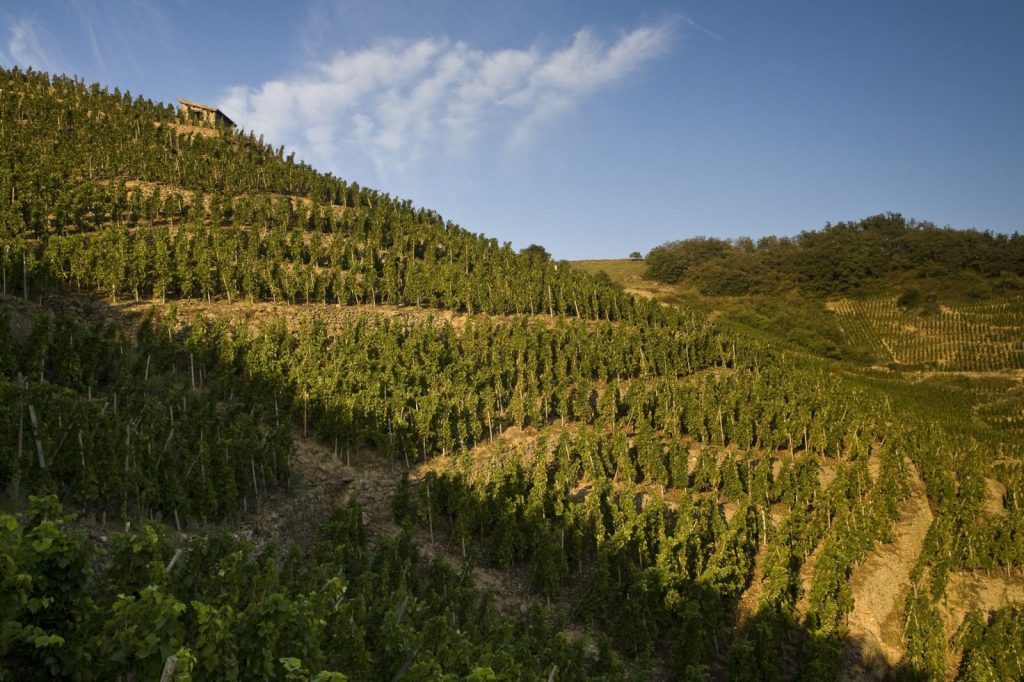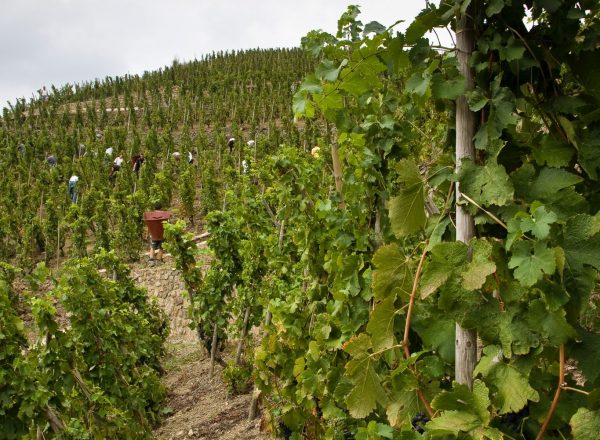Domaine E. Guigal is a historic and venerable winery located in the centre of the Northern Rhône Valley. Étienne Guigal established this prestigious winery in 1946, and since then, it has come to represent quality and brilliance in winemaking. But the La-La-Las, a trio of outstanding single-vineyard wines, are what really capture the spirit of Guigal’s commitment to making wines that honour the distinctive terroir of the area.
Marcel Guigal, Étienne’s son, was largely responsible for the estate’s reputation rising to recognition on a global scale. He oversaw the purchase of some of the most valuable vineyards in the Northern Rhône, establishing Domaine E. Guigal as a benchmark for Syrah-based wines. The La-La-Las, which include La Mouline, La Turque, and La Landonne, are the height of Guigal’s winemaking ability; each is a unique representation of terroir and evidence of the family’s unwavering dedication to excellence.

The Four Lieu-Dits – A Journey Through Terroir
Four lieu-dits, or distinct vineyard locations, each with its own microclimate, exposure, and soil composition, are what give the La-La-Las their distinct character. These lieux-dits serve as the canvases on which Guigal creates his masterworks of oenology.

La Mouline is a south-facing vineyard tucked away in the heart of Côte-Rôtie. The Syrah grapes planted here are ripe and nuanced, partly due to the site’s slope and exposure to sunlight. La Mouline is highly praised for its sensual, floral aromas that include bacon grease, exotic spices, and violets.

La Turque: La Turque is a sharp contrast to La Mouline, located nearby. This is a denser soil, and the force and structure of the wine show through. La Turque, sometimes regarded as the strongest of the La-La-Las, has a unique minerality, dark fruit notes, and black olives.

La Landonne: Known for its granite-based soils and steep terraces, La Landonne is located on the northernmost tip of the Côte-Rôtie appellation. With strong black fruit flavours, smoky undertones, and a firm tannic structure that makes for excellent ageing potential, this site gives the wines a feeling of austerity and minerality.
Le Reynard: Is the new and fourth “La La La“. Le Reynard, the brook that connects the lieux-dits Côte Brune and Côte Blonde, is the source of the name. To remain in the Côte-Rôties family of unique vineyards known as “the LaLas,” the term is feminised to “La Reynard.”
Unraveling the Tapestry of Soil Types
The different soil types that make up each vineyard further highlight the lieu-dits’ unique terroir.
Granite of La Mouline and La Landonne: The wines’ structure and refinement are influenced by the granite soils in these areas. Because of granite’s drainage qualities and capacity to hold heat, it produces wines with excellent aromatic complexity and a delicate acidity balance.
Schist of La Turque: The wine has a pronounced mineral character due to the schist-dominated soil of La Turque. The concentration and intensity of the Syrah grapes are influenced by the good water retention and drainage provided by the stratified composition of the schist.
Examining these vineyards’ diverse soil compositions offers a fascinating window into the complex mosaic that is the La-La-Las. Because of their meticulous attention to history, lieu-dits, and soil types, Domaine E. Guigal can produce wines that are a lasting tribute to the family’s commitment to the trade of winemaking, as well as a reflection of the Northern Rhône Valley.
Possibly one of the world’s most exquisite and alluring wines is Cote Rotie. When they are at their peak, they have a rich flavour with diverse aromatics that include earthy, spicy, flowery, black and red fruit, bacon fat, and kirsch.
The finest Cote Rotie wines have pure crimson and occasionally deeper berries with a crisp finish. The majority of the time, the wines are medium full-bodied, silky, sensual wines that caress the palate with unique flavours. When blended, viognier grapes give the wines a delicate, flowery, and white fruit flavour as well as an exotic feel. Additionally, the wine may benefit from the addition of black pepper from the Viognier stems.
The majority of Cote Rotie wines are expensive, but they may be worthwhile given the tiny size of the appellation and the growing demand for these wines throughout the world. I purchase these wines for my personal inventory.